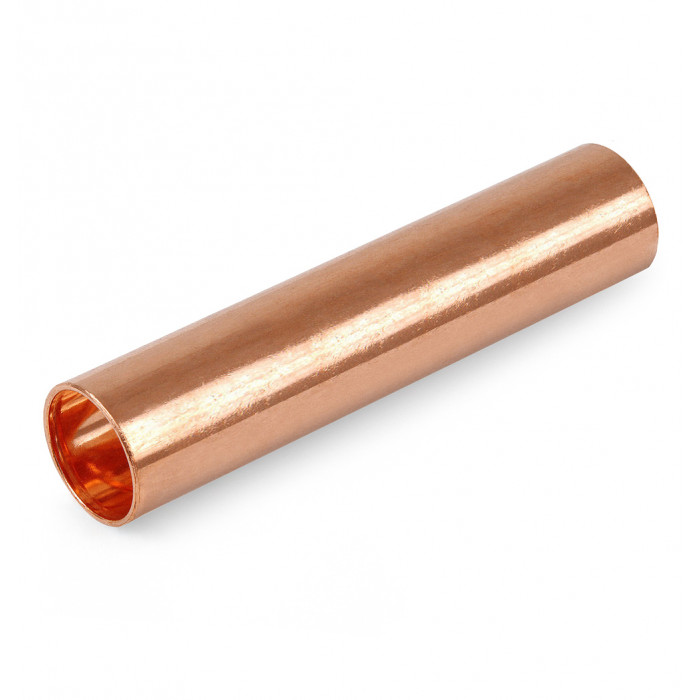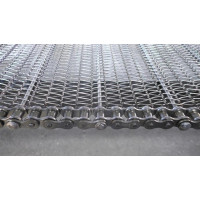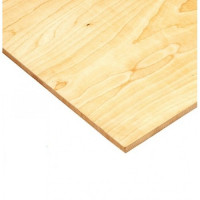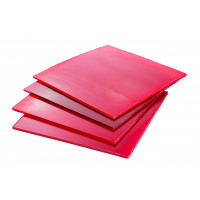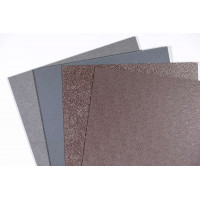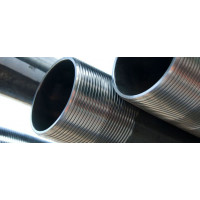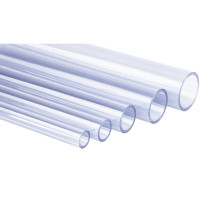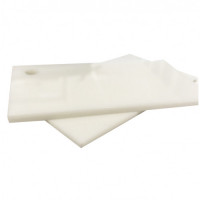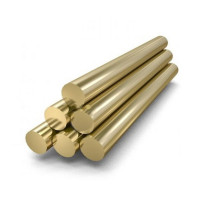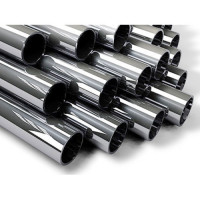Copper pipe М1 М2 14х2,0 mm is a hollow metal product with a rounded elongated shape. This product is made from copper of different grades.
A copper pipe is produced from copper M1, M2 or grade M3. GOST 859-2001 regulates the chemical composition of products. According to GOST 24231-80, sample particles are selected and prepared to determine the chemical composition of the alloy.
Copper pipe today is one of the most popular and frequently used elements of non-ferrous rolled products, used in virtually every area of production and construction.
Performance characteristics allow the use of these products in the manufacture of equipment - heating and climatic. For example, in elite class bimetallic radiators and modern air conditioning systems.
Copper pipe is divided into two types - unannealed and annealed. In order to obtain products with the desired characteristics, an annealing process is carried out - heating up to 600 ° C - 700 ° C with gradual cooling after (vacation). The finished material acquires other performance characteristics.
Depending on the wall thickness, there are:
- copper pipe GOST 617-2006 general purpose thick-walled;
- according to GOST 11383-75 - thin-walled drawn.
The scope of the copper pipe is very different. It is used in housing and communal services, machine and instrument making, in the field of construction and electric power industry.
Most often copper pipes are used in systems such as:
• heating;
• water supply systems (both cold and hot);
• connection of technological equipment;
• freon supply systems in freezing or refrigeration equipment;
• hydraulic systems supplying oils;
• fuel pipelines;
• pipelines transporting compressed air or gas;
• condensate removal systems;
• air conditioning systems, etc.
Pipes made of this material are not able to interact with various household liquids such as: oils, fats, detergents, etc. It is worth noting that chlorine, which is contained in water, does not destroy the inner surface of the pipe, but, on the contrary, protects it from destruction.
In similarity with plastic pipes, copper is attractive in that it is impossible to form build-ups inside the pipe, which contribute to clogging of pipes. According to the descriptions in GOST, pipes can withstand fairly high temperatures and sudden changes are not a reason for them to break.
This type of pipe with a size of 14 inches in diameter is very flexible. In accordance with this, the pipes become safer because they do not collapse during the cooling of the water.
The main difference from other types of pipes is that the impact of various chemicals and paints is not a reason for destruction, but on the contrary, it is protection for a copper pipe and an attractive design. In addition, there are pipes on sale that are pre-treated with chrome for further painting.
Copper pipes are capable of melting at a temperature of 108 degrees.
If the air in the room is dry and does not have moisture, then the pipes will not be covered with oxide, but if otherwise, they will be covered with it and take on a greenish appearance. In addition, it is worth noting that the material of these pipes is not heavy, unlike cast iron pipes.
In the first form, the pipe has the ability to be fired, which contributes to the softness of the pipe. But the stability and strength of the pipe at this time, apparently changes for the worse. This type is mounted by several dozen pipe sections of approximately 2.5 meters in size. In the second type, the finish is made in the form of straight-type segments approximately 5 meters in size.
The type of section can also differ from each other, and you can find a pipe with a rectangular section on the market. This type is usually used in stator-wound electrical machines that are cooled with a special liquid. It is worth noting that the production of this type is quite complicated and therefore the cost will be more expensive.
The main features of copper pipe finishing
To get started, measure and cut the pipes into pieces. The cross section of the pipe must be even and for this you need a special pipe cutter.
Technology for attaching pipes to each other
Copper pipes do not need to be threaded.
You can connect them to each other in two ways:
With the help of soldering;
By pressing.
Copper pipe: advantages and disadvantages
In addition to strength, reliability and durability, copper pipes have a lot of other advantages, against which the advantages of all other pipeline systems simply fade. Let us study in more detail all the positive aspects of copper.
The first thing that can be highlighted here is versatility - copper pipes can be used to transport any liquids and under any conditions. The only thing that partially falls out of the scope of copper pipes is plumbing - it is, of course, possible to solder it from copper, but the salts and alkalis contained in tap water reduce the life of copper plumbing by almost one and a half times. There is only one way out of this situation - before supplying water to the copper system.him piping it needs to be softened. An ordinary flask is placed, which is filled with special salt. In all other respects, without restrictions - this is heating, and underfloor heating, and ventilation and air conditioning systems, and other places where it becomes necessary to transport liquid over any distance.
You should not ignore the properties of copper as such - this is its resistance to decay and corrosion, as well as ductility, which leads to a simple installation process. Do not forget about the bactericidal properties of this material - the water in the copper tank does not bloom, and pathogenic microbes do not multiply in it.
As for the performance characteristics of copper pipes, it should be noted a wide range of temperatures of the liquid that can be moved through them - copper freely withstands temperatures from -100 ° C to 250 ° C. At these temperatures, the pipes do not melt, crack or deform.
You can highlight a lot of other advantages of this material - for example, some people attribute decorative qualities to it, but you yourself understand that this moment is purely individual and mainly depends on the assembly and skills of the master. You can also note the taste of water, in which there is no metallic taste. It would not be superfluous to mention a simple soldering technology, but more on that later, but for now we will highlight a couple of drawbacks - whatever one may say, this material cannot be called ideal in all respects. In principle, the negative points are not very serious, except for what we mentioned above (reducing the service life when transporting tap water) - all the rest can rather be called features.
High Cost – Copper pipes and fittings are the most expensive of all piping systems.
Copper does not accept neighborhood with a galvanized pipe - this is the law of nature, which says that the neighborhood of copper and zinc leads to the launch of a process such as electrolysis. Stick a copper and zinc nail into the ground, potatoes, apples, lemons, and other vegetable products that contain juice or water, and measure the voltage at their ends. We are talking about millivolts, but it is they who will destroy the pipes and reduce their service life by two or even three times. In general, such a neighborhood is unfortunate and should be avoided.
In principle, it is difficult to identify more shortcomings - there are none and cannot be. It is for this reason that the installation of copper pipes is by far the best option for creating durable heating and plumbing systems.
What are copper pipes
There are not so many varieties of copper pipes, and they can only be classified according to two criteria - according to the method of manufacture and size.
According to the manufacturing technology, this material can be divided into two types - annealed copper pipes and, accordingly, not annealed. The advantage of the former is their flexibility, which in some way facilitates the work, and the advantage of the latter is their strength. The former are in most cases used for air conditioning systems, and the latter can be called plumbing copper pipes. You can distinguish them by color (annealed pipes are darker) and by packaging - annealed pipes are sold in coils with winding up to 50m, and not annealed with whips up to 5m long.
Dimensions of copper pipes. Here, two subspecies of this material can also be distinguished: firstly, they can be classified according to the type of section (rectangular or round) and, secondly, according to the size of the section. Rectangular, or, as they are also called, shaped copper pipes are quite specific and are used very rarely, but round ones are widely used. As for the size of the section, or, as they say, the diameter of copper pipes, here things are almost exactly the same as with other pipelines. The only difference is that the size of this material is usually indicated in millimeters, not inches - for example, a copper pipe with a 1/4″ bore diameter is marked as 12/14. Its outer and inner diameter is indicated. Alternatively, you can find another marking - for example, 14/1 (outer diameter and wall thickness).
In addition to the above types of copper pipes, there are special products of this type. For example, a copper pipe for underfloor heating, the main difference of which is the wall thickness (it is larger and can be 1.5 mm). Also, it would not be superfluous to mention the so-called finned tubes, which are made for heat exchangers (they can be solid copper or bimetallic, made of copper and aluminum). Recently, chrome-plated copper pipes have appeared, which have shown themselves well in the process of manufacturing external components of heating systems, water supply or gas pipelines, to which special aesthetic requirements are put forward.
Methods for connecting copper pipes
Almost all copper pipes can be connected in two ways - by soldering using special solders and by means of compression fittings. Both methods are reliable, but the most commonly used method is high-temperature soldering. DeThe problem is that crimping fittings requires a special press, which is expensive, and all that is needed for soldering is a small torch with a can of gas, solder and flux. Soldering copper pipes for water supply is easier and faster - besides, unlike fittings, which are unrepairable after crimping, a soldered joint can be corrected at any time (solder and eliminate leaks).
Soldering copper pipes is as follows. It should immediately be clarified that this technology provides for a connection according to the principle of a pipe into a socket. First, the end of the pipe is carefully cleaned with sandpaper, then it is no less carefully degreased with alcohol. The same should be done with the inner diameter of the socket. Then a special flux is applied to the end of the pipe, after which it is inserted into the socket. Now the joint is heated - ideally it should be heated to such an extent that after touching the solder, the latter will melt. Which is the final stage of soldering - touching the junction of the pipe and socket with solder, we melt it. Liquid solder through the capillaries formed by the flux is drawn into the joint and fills the space between the pipe and the socket. The connection soldered in this way should cool naturally.
Connection of copper pipes by pressing. I’ll tell you briefly about this assembly technology, since it makes no sense to purchase a special press, even for more than one-time work - it’s easier to rent it if you really want to work with just such pipes and fittings. For those who are familiar with crimped metal-plastic pipes, this technology will not seem new - everything is exactly the same here. One pipe is inserted into the fitting with a rubber seal, after which this joint is pressed with a press.
There is also a technology for assembling copper pipes using nut connections - the principle, again, is exactly the same as that of a metal-plastic pipe. The difference lies only in the device of the compression ring, which has special concentric protrusions that mint the same counterpart in the copper pipe. As in the case of a metal-plastic pipe, this connection is not reliable, and it is highly not recommended to hide it in the wall.
You can buy copper pipe М1 М2 14х2,0 mm from us at the best price in Ukraine. A wide range of products allows us to quickly and efficiently fulfill any order, helping to complete any construction work on time.
No questions about this product, be the first and ask your question.

